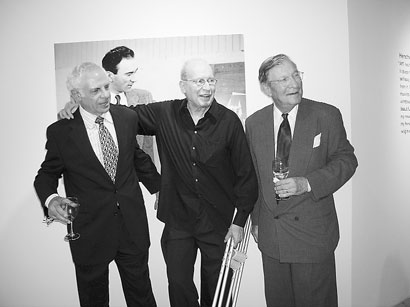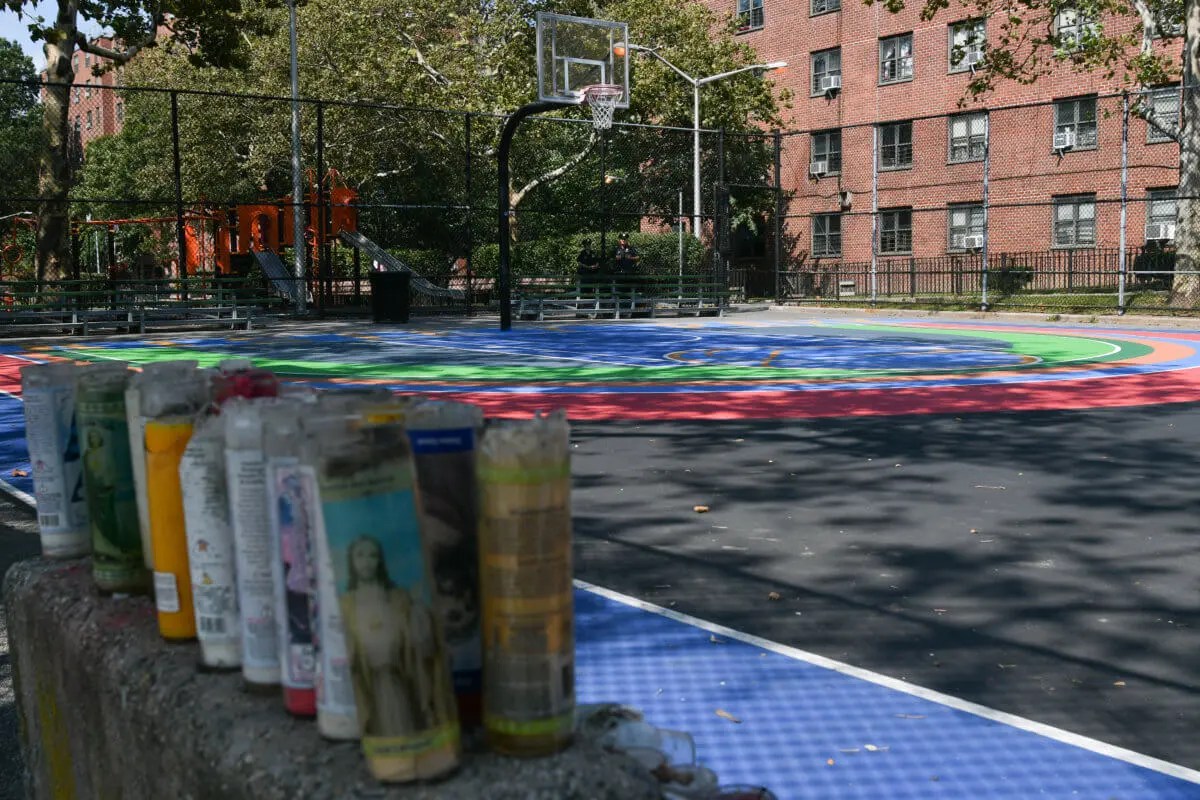By Jaclyn Marinese
Successful art directors honor the teacher who gave them their start
For artist and professor Herschel Levit, teaching was more than mere instruction but rather a form of art in itself. Though he passed away over a decade ago, Levit’s legacy lives on in the lives of those he touched as a professor of communications design at The Pratt Institute, where he taught for over three decades. Pratt is honoring him with an exhibit entitled “Under His Wing: Herschel Levit’s Legacy in the World of Advertising” at its gallery at 144 West 14th St.
It is a retrospective on the work of seven of his former students, all of whom have since been inducted into the Art Directors Hall of Fame. Levit’s students Steve Frankfurt, Bob Giraldi, Steve Horn, George Lois, Sheila Metzner, Stan Richards, and Len Sirowitz have been responsible for some of the largest advertising campaigns in American history.
Studying with Herschel Levit not only enhanced them professionally (he helped many of them find work after school,) but more importantly helped them develop as artists and people who not only can appreciate creativity in advertising, but the importance of the arts in every day life.
“Herschel opened up our eyes to the world,” said former student Len Sirowitz. “Not just in graphics. That was only one part of it, he taught us the interrelationship of all of the arts.”
This show, which is the first in Pratt’s “President’s Exhibition Series,” is a combination of the photography, book illustrations, mounted print ads, album covers, movie posters, television commercial and music video footage that were involved the establishment of the “Golden Age of Advertising” which began in the 1950’s.
The television commercials and music videos of Bob Giraldi and Steve Horn are projected onto large white walls. Giraldi is know for his work directing music video’s including Michael Jackson’s “Beat It,” among others. His latest short film “Dream Begins” opened the presentation that won New York City its bid for the 2001 Olympics. Horn, owner of Steve & Linda Horn, Inc, was named the Best Commercials Director of the year by “Advertising Age” in 1985 and his work is now part of the permanent archives at MoMA.
For Horn, Herschel Levit played a large role in forming his artistic identity.
“After my first year at Pratt I was going to transfer to architecture school,” said Horn “Levit convinced me not to do it. During the second year he found something wrong with my work and he found out I was color blind.” Horn says discovering his color blindness was an enormous blow to his aspirations as an artist. Still, Levit helped him realize that he should pursue his dream, despite any limitation.
“He wasn’t just another teacher because otherwise I might have been doing architecture,” said Horn. “Also I would have been afraid of failing in this industry because I was colorblind. He gave me the courage to go on.”
Other parts of the exhibit portray the works of artists including Steve Frankfort’s “Betcha Can’t Eat Just One” campaign for Lay’s Potato Chips and George Louis’ “I Want My MTV” campaign images.
Most important to all of the successful artists when talking about their former teacher is the fact that Herschel Levit took them in, not only as students, but as equals.
“We never learned anything too technical,” said Shelia Metzner. “It was all about bigger ideas; about being a human being and an interesting person and absorbing culture. And it didn’t matter what you did, it was just about developing yourself and that was the greatest part.”
On the wall near some of Levit’s paintings is a quote of his written in 1976.
“ART has been Man’s greatest and noblest achievement,” he said. “It doesn’t start wars, nor does it create hunger. It selflessly gives to the viewer whatever he can derive from it. The great architecture, the frescoes, the mosaics and sculpture, the fabulous stained glass windows of Chartres and of Borges, and all the other beautiful works of the artists of the past, give me my meaning of life. There is love in my work and in my hands, and if God is love, then I must be a very religious person.”
At the exhibit’s recent opening, the group of artists stood next to each other cracking jokes about their days as Pratt students. Something seemed to bind them beyond their collective successes in the advertising world. No doubt it was the silent voice of Herschel Levit whose presence was in the room, apparent through the work on the walls.


































